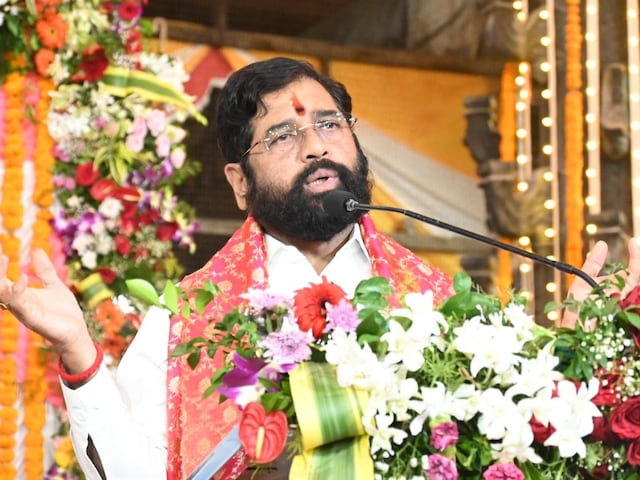The Reserve Bank of India (RBI) on Thursday said the second Covid wave’s macro-economic cost to the country could hopefully be limited to the June quarter with a possible spillover to July, even as it chose not to alter its GDP growth outlook for FY22 from 10.5%. This turns out to be marginally higher than the recently revised estimates by Moody’s (9.3%) and S&P (9.8%).

Seeking to paint a somewhat rosy picture of credit demand and supply, the central bank observed that banks would have sufficient capital at the aggregate level even in a severe stress scenario. From the three-year low of 5.1% till October 2020, loan growth of banks rose to 5.6% on year till March 2021 and seems to be aided further by liquidity support, low interest rates and the government’s ‘growth-enhancing’ steps, the RBI noted.
It, however, added that with the lifting of the interim stay on asset classification standstill by the Supreme Court on March 23, banks’ asset quality would need to be closely monitored in the coming quarters, with preparedness for higher provisioning.
Prognosticating that CPI inflation would likely average at 5% during 2021-22, with ‘risks broadly balanced’, the RBI reiterated its resolve to retain its growth-supportive bias in the conduct of monetary policy, till economic expansion “gains traction on a durable basis” even while ensuring inflation remains within the target (4+/-2%). It pinned hopes on ‘coordinated action’ by the Centre and states to reduce auto fuel taxes that fan fuel inflation.

Meanwhile, the annual report also revealed that an accounting change that inflated the RBI’s ‘realised profit’ from sale of foreign exchange by 69% to Rs 50,629 crore primarily enabled it to transfer a higher-than-expected Rs 99,122 crore as surplus to the government for the nine months to March 31, 2021. A lower appropriation to the contingency fund (Rs 20,170 crore in July 2020-March 2021 against Rs 73,615 crore in July 2019-June 2020), which reined in expenditure, also helped.
The Union Budget had factored in just Rs 57,128 crore from the RBI for the financial year 2021-22, and the extra transfer came as a bonanza for it, amid a severe revenue shortfall in April-May and possibly in June too. The RBI is in the process of shifting to the April-March financial year, in sync with the government’s and corporate India’s, from July-June previously.
Though the higher realised gains from the sale of foreign exchange is computed in line with the Bimal Jalan Committee’s recommendations which reviewed the economic capital framework of the RBI, many experts had warned against utilisation of the ‘notional’ gains from sale of foreign exchange. “India holds foreign currency assets for precautionary purposes and, therefore, needs to hold structurally long positions in foreign currency for policy purposes. This is not with a commercial intent.
Foreign currency assets also form a high proportion of the total balance sheet assets. For the purpose of financial reporting and transparency, such assets are revalued at market rates and gains and losses are transferred to a revaluation account. The gains arising from such revaluation are unrealised and notional and have not come out of profits generated by RBI. It cannot, therefore, be treated as free reserves eligible for distribution. Any utilisation of these funds also has consequences for inflation and money supply,” former RBI deputy governor Shyamala Gopinath had told.
As per the new accounting norm, the difference between sales proceeds of foreign currency and its weighted average holding cost is treated as realised profit or loss, as the case may be.

The RBI also stated that it would ensure that system-level liquidity remains comfortable during 2021- 22 in alignment with the stance of monetary policy, and monetary transmission continues unimpeded while maintaining financial stability.
The waiving of interest on interest charged on loans during moratorium period (March 1, 2020 to August 31, 2020) may also impinge on lending institutions’ finances. They are, however, better positioned than before in managing stress in balance sheets in view of higher capital buffers, improvement in recoveries and a return to profitability, the RBI said.
In line with RBI’s view, many lenders are expecting a better credit growth in the current financial year (FY22) on the back of economic recovery forecasts. For instance, State Bank of India (SBI) hopes to grow its loan book by 10% in FY22, despite less than 5% credit growth in FY21. After declaring the March quarter earnings, Dinesh Kumar Khara, chairman, SBI said, “The bank may register a credit growth of around 10% in FY22 as the bank’s credit growth is normally 1% above India’s GDP.”
According to the RBI, the evolving CPI inflation trajectory is likely to be subjected to both upside and downside pressures. “The food inflation path will critically depend on the temporal and spatial progress of the south-west monsoon in 2021. Second, some respite from the incidence of domestic taxes on petroleum products through coordinated action by the Centre and states could provide relief, although international crude oil prices continued to be volatile. Third, a combination of high international commodity prices and logistic costs may push up input price pressures across manufacturing and services,” it said.














